




|
Princess Juliana airport extraordinary!
“ Welcome to Sint Marteen”
St Martin Airport Information.
While St. Martin has two airports, there is only one, on St. Maarten, that is capable of handling large planes and international air traffic. With the relatively small size of the island, visitors flying into the Dutch side of the country will have little trouble making their way to the French side to vacation or take an inter-island flight from the much smaller airport situated there. There is a departure tax when leaving the airport of (USD) for international destinations and (USD) for destinations within the Netherlands Antilles. Fees may be included on airlines such as Air France, Continental, Delta, KLM, and American, so be sure to check with your airline regarding the fee. L’Esperance Airport: Phone: 590-87-53-03- The small L’Esperance Airport in St. Martin generally serves small charter and inter-island planes. Federal Aviation Administration: Website: http://www.faa.gov Airline passengers often prefer to travel on board air carriers they know and trust, but this may not always be an option for getting to your destination of choice. The Federal Aviation Administration of the United States (FAA) provides air carrier reputation rankings that are based on performance, service, and safety. The FAA’s Web site is at http://www.faa.gov. Federal Aviation Administration 800 Independence Ave, SW Washington, DC 20591 The FAA consumer hotline can be contacted at 866-835-5322, and those looking for the Aviation Consumer Protection Division or looking to report air travel service problems should contact 202-366-2220. The FAA has deemed both the government of the Netherlands Antilles (St. Maarten) and the government of France (St. Martin) as being in compliance with the International Aviation Safety Assessment Program that is based on a country’s standards for aircraft operations. General St. Martin Air Travel & Airport InformationThere are a variety of airlines serving Princess Juliana International Airport, and travelers should research air carriers and flight timetables that work best for them. Nonstop flights, which do no stop are preferred by many over direct flights, which may have stops between your departure and arrival. Sample flight times to St. Maarten and St. Martin are 2 and a half hours from Miami; 3 and a half hours from New York; 5 hours from Montreal; and 8 hours from Paris. Passengers from the United States and Canada can find both direct and nonstop flights to Princess Juliana International Airport, while travelers from Europe and abroad may sometimes have to make connections in U.S. cities or in San Juan, Puerto Rico.
Major Airline Phone NumbersAir Canada 888-712-7786 http://www.aircanada.com/en/home.html Air France 599-545-4212 http://www.airfrance.com Air Transat 877-872-6728 http://www.airtransat.com American Airlines (American Eagle) 800-433-7300 http://www.aa.com Continental 800-231-0856 http://www.continental.com Delta 800-241-4141 http://www.delta.com KLM 599-545-4747 http://www.klm.com Paris Corsair http://www.corsair.fr/corsair/home.ts US Airways 800-622-1015 http://www.usairways.com United Airlines 800-864-8331 http://www.united.com Charter & Inter-Island ServiceAirSXM 0900-594-5359 http://www.airsxm.com BWIA 800-538-2942 http://www.bwee.com GWV 866-797-0038 http://www.gwvvacations.com LIAT 888-844-5428 http://www.liatairline.com WinAir 599-544-4237 http://www.fly-winair.com Taking Care of Your Luggage When Flying• Most airlines allow two pieces of luggage per person. If you are traveling on a charter it is a good idea to check with the company. Some charters only allow one piece of luggage per person. • Be sure to tag all luggage (including your carry-on) with your name, address and phone number. If you know where you will be staying, add that information as well. • Be sure all your travel documents, tickets, money, credit cards and traveler’s checks, medications, valuables and personal items are in your carry-on or purse. • It is recommended that you bring a change of clothes in your carry-on. If your luggage is "delayed" you’ll have something else to wear! • If you are bringing anything that can be ruined if it gets wet - pack it in a plastic bag. Occasionally tropical rain storms soak the luggage on its way from the plane to baggage claim.
Princess Juliana of the NetherlandsPrincess Juliana, formerly Queen Juliana of the Netherlands, was a larger-than-life figure. Warm-hearted and jolly, inwardly a little shy, splendidly rich, and unapologetically round, she made no claim to be beautiful or well-dressed, but she radiated an aura of supreme self-confidence that caused her to be widely loved in Holland, and in many countries besides. She was a constitutional monarch, who led her country by example. Her simplicity of nature was tempered by a shrewd sense of proportion, qualities she employed to steer the Dutch monarchy into a democratic and modern age. Juliana Louise Emma Marie Wilhelmina, Princess of Orange-Nassau: born The Hague 30 April 1909; Princess Regent of the Netherlands October-December 1947, May-August 1948; succeeded 1948 as Queen of the Netherlands, abdicated 1980; styled Princess Juliana of the Netherlands 1980-2004; married 1937 Prince Bernhard of Lippe-Biesterfeld (four daughters); died Baarn, the Netherlands 20 March 2004. Princess Juliana, formerly Queen Juliana of the Netherlands, was a larger-than-life figure. Warm-hearted and jolly, inwardly a little shy, splendidly rich, and unapologetically round, she made no claim to be beautiful or well-dressed, but she radiated an aura of supreme self-confidence that caused her to be widely loved in Holland, and in many countries besides. She was a constitutional monarch, who led her country by example. Her simplicity of nature was tempered by a shrewd sense of proportion, qualities she employed to steer the Dutch monarchy into a democratic and modern age.
She was one in a line of three female sovereigns in Holland, whose reigns spanned a century. Her mother, Queen Wilhelmina, reigned from 1890 until her abdication in 1948, and Queen Juliana reigned from 1948 until she abdicated, in favour of her daughter Beatrix, on her 71st birthday in 1980. She survived for almost another 24 years. As monarch, much of her work was concerned with receiving foreign heads of state, and the heads of diplomatic missions. But, when a new cabinet was formed, she played a key role, and she acted as a kind of national ombudsman in disputes of various kinds.
Throughout her reign, Queen Juliana had no actual power or political responsibility (the constitution stating, "The King can do no wrong; the ministers are responsible"), but she wielded influence and was dedicated to her work. She read all bills before they were presented to Parliament, and sent some ministers away to do their homework again, saving them from public humiliation. Since she signed the bills, she felt she had moral responsibility for their contents. Firmly set against the death penalty, she refused to sign the death sentence of a German war criminal, offering to stand down herself. It was dropped. Her other key interests were a dedicated belief in all forms of international co-operation and European integration, concern for the plight of developing countries, refugees and child welfare. She once declared: A child must be surrounded with love. No one can live without receiving love, or without feeling wanted for his own sake. In fact, no human being lives without giving love. There has been a kingdom in the Netherlands for nearly 200 years, though the history of the House of Orange-Nassau traces its roots back considerably further, and includes King William III of England as one of its scions. Queen Juliana descended from his kinsman Jan Willem Friso, Prince of Orange, who died in 1711. She also descended from Willem IV, who married Anne, the Princess Royal, daughter of Britain’s King George II. Generations of King Willems followed until Willem VI was proclaimed Willem I, King of the Netherlands, in 1815.
Had she been a boy, Queen Wilhelmina would have been the fourth King Willem. She ascended the throne at the age of 10 in 1890, under the regency of her mother, Queen Emma. Early photographs show a shy young queen in white, reviewing mounted troops from a carriage, her mother clad in austere black at her side.
Wilhelmina came of age in 1898 and, at her inauguration, presented an encouragingly youthful aspect amongst her portly and be-whiskered ministers. In 1901 she married Duke Heinrich (later created Prince Hendrik), the youngest son of Friedrich Franz II, Duke of Mecklenburg-Schwerin. In those early years of marriage, Queen Wilhelmina suffered three miscarriages, leaving no heir to the throne. Juliana, their only child, was born in 1909, to the intense (and in some cases drunken) joy of the Dutch people. She proved "strong and healthy", in the words of Queen Wilhelmina, and took early steps in public, stoutly adorned in white and wearing an elaborate white bonnet. She was named after Juliana von Stolberg, who was the mother of Willem the Silent, the founder of the modern Dutch nation in the 16th century. At the outbreak of the First World War, her parents held the child high as she waved to cheering crowds in The Hague. She was young enough to go through the war as a carefree child. But she missed the company of other children, relied on favourite pets for company, and regretted having no brother or sister. Her mother believed that the need for human contact was an integral part of her character. Indeed her childhood was overshadowed by her unique status. She longed to play and have fun, and she hated it when elderly ladies rose to curtsey to her. Juliana studied in a class of children at Huis den Bosch Palace, not far from The Hague, but she was isolated from everyday life. Her almost excessively devout mother gave her intense religious instruction. At the age of 18, in 1927, Juliana entered public life and was installed in the Council of State. Her first engagement was to visit Borculo, a small town ravaged by a cyclone, accompanied by her mother. Presently she laid a memorial stone, attended the State Opening of Parliament, and entered the Dutch Reformed Church in a silent ceremony at her own request. She then enrolled as a normal student at Leiden University, studying law, literature, religious history and hydraulics until 1930.
From 1930 to 1940, Juliana was a supportive member of the Dutch royal family, undertaking the traditional royal duties. This was a time of depression in Holland, and she served as Chairman of the National Crisis Committee to aid victims of a severe national economic crisis, and she travelled widely. She was deeply saddened by the death of her bespectacled grandmother Queen Emma, in March 1934, and yet more so by the death of her father less than four months later. The latter was afforded a white funeral, the horses and funeral carriage heavily bedecked in white. Juliana succeeded him as President of the Netherlands Red Cross. In November 1934, she was a bridesmaid at Princess Marina’s wedding to the Duke of Kent. Princess Eugénie of Greece was teased for having to walk behind Juliana. She recalled: They said to me: "It’s because you’re so fat that they put you there." Well, Queen Juliana is very fat, you know. She’s an awfully nice woman, but she’s fat. Once again the ultimate fate of the crown lay in the balance with no heir after Juliana. By 1936 she was 27 and still unmarried. That year she and her mother spent their winter holidays at Igls, near Innsbruck, so that they could attend the Winter Olympics. Here they met Prince Bernhard of Lippe-Biesterfeld, something of a dashing young blade, who drove there from Paris in his car. His visits became more frequent and, after intense discussions about the deep responsibilities they were both assuming, they were married on 7 January 1937 (the 58th anniversary of the wedding of Queen Emma). They made their home at Soestdijk Palace in Baarn, and it was there that Juliana died. Two daughters were born there before the Second World War. Prince Bernhard presented a rare lean figure at the Dutch court. In May 1937, he accompanied Juliana to the Coronation of King George VI, at which she represented Queen Wilhelmina.
On 10 May 1940 the Germans invaded Holland, and two days later the entire Dutch royal family was spirited away to England aboard HMS Codrington, sent by George VI. While Queen Wilhelmina established her government-in-exile in London, Juliana took her daughters to Canada, where she settled in Rockcliffe, a suburb of Ottawa. By happy chance, her favourite cousin, Princess Alice, Countess of Athlone, was in Ottawa as the wife of the Governor-General. In her memoirs, Princess Alice described Juliana as magnificent: She never once complained or expressed unhappiness, but threw herself into everything that was being done for the war. She was one of the first blood donors when the campaign started and waited upon patients regularly. Their third daughter was born in Ottawa and named Margriet, after the "marguerite", the symbol of resistance. President Franklin Roosevelt was one of her godparents. During this time Juliana worked tirelessly for the Netherlands Red Cross, inspired the Dutch forces overseas and kept in contact with the Dutch colonies in Canada and the United States. Queen Wilhelmina wrote: "In Juliana we had a source of strength for the Dutch cause across the ocean, and a forceful representative of the nation with two of our most powerful allies." Queen Wilhelmina settled in a house in Mortimer, near Reading, in 1944 and, leaving the children in Canada, Juliana joined her there in September 1944, visiting the wounded, and studying the treatment of war victims. On their return to Holland in April 1945 (shortly after attending the memorial service for President Roosevelt in St Paul’s Cathedral), Juliana assumed responsibility for the Netherlands National Reconstruction, and served as President of the Council for Rehabilitation of the People of the Netherlands. She also had to integrate her young family into Dutch life on their return from Canada that August. Conscious of her own isolation, she decided to invite the children from a local school to a party. She was undaunted when told there would be 600 of them.
In November 1947, Juliana attended the wedding of Princess Elizabeth, prompting the acerbic homosexual Sir Michael Duff to write unkindly: "Juliana positively crawled in what looked like seafood, which clung to her dyke-like hat." Queen Wilhelmina had long been attracted to the idea of abdicating, in order to devote herself to religious study. But she wanted to give Juliana as much chance to enjoy a carefree life with her young family, before burdening her with the responsibilities of being Queen. She determined to stay on a while, but failing health caused her to let Juliana serve as Regent, before she finally abdicated in 1948. Juliana had been distressed at the thought of taking over, but her sense of duty came first and she appreciated that her mother had earned a rest after 50 years. Wilhelmina presented the new queen to the Dutch people from the balcony of the Dam Palace in Amsterdam and urged them to join her in a great cry of "Long live our Queen", before she retired into private life as Princess Wilhelmina, living on until 1962. Queen Juliana’s inauguration took place in the New Church in Amsterdam in September 1948, with Princess Margaret representing King George VI, her first solo overseas engagement. In 1949 the Dutch East Indies (Java, Celebes, the Moluccas, Borneo, and Sumatra) broke away from Holland and were not incorporated into a Dutch Commonwealth. In 1954 Surinam and the Dutch Antilles were granted full responsibility for their internal affairs and made equal partners with the Netherlands within the kingdom. In 1950 Juliana paid the first of two state visits to Britain, being entertained by King George VI and Queen Elizabeth, and given the Royal Victorian Chain. In 1952 she paid an exhausting State Visit to the United States. Queen Elizabeth II paid a State Visit to the Netherlands in 1958, conferring on her the Order of the Garter, and Juliana returned to Britain for another State Visit in 1972, staying at Windsor Castle. The castle was floodlit for an evening reception, and Lord Plunket, Deputy Master of the Household, transformed the state rooms, even creating a great obelisk of white and pink blossom, made of whole branches of white cherry and prunus. Cecil Beaton, one of the guests, noted: Queen Juliana looked nice and cosy and sympathetic in spite of her ugly little face with unseeing small eyes and pig snout. Her hair was fluffy and pretty, her dress - dark, sequined flowers - unusual, her ropes of pearls magnificent . . . She is a great lady, never thinks of herself as a queen, is utterly natural. She has the nicest aspects of the Dutch. Juliana’s youngest daughter, Marijke (or Christina), who had been born in February 1947, suffered from clouded vision due to Juliana’s having German measles during the pregnancy. At first she was blind. In the quest for a cure, Juliana turned to a faith healer, called Greet Hofmans, whose presence in inner palace circles led to many disagreeable rumours. She was even dubbed "the female Rasputin". Her hold over Queen Juliana was generally deemed to be malevolent and by 1956 caused something of a political crisis, but the Queen rode the storm, and the young princess’s sight improved enough for her to ride a bicycle in traffic.
The celebration of the Silver Wedding of Juliana and Bernhard in 1962 was an occasion when their joint popularity was evident, and one of the rare occasions when the British Queen attended a gathering of royalty in Europe. Queen Juliana marked the occasion by giving land and funds for the establishment of youth centres throughout the Netherlands. (Likewise, at her Silver Jubilee in 1973, she donated the money raised to world organisations dedicated to children, and on her 70th birthday in 1979 gave the money to the International Year of the Child.) Prince Bernhard maintained a high profile in the early years of the reign and was well known in Great Britain. He and the Duke of Edinburgh were closely involved in the World Wildlife Fund, of which he was International President. He had to overcome the stigma of being a German prince, but went on to become head of the home resistance forces during the Second World War and Commander of the Netherlands Forces of the Interior under General Dwight Eisenhower. He was a pilot, a financier, something of a playboy, a keen photographer and a mountaineer. Over the years he did perhaps more than his wife to make the Netherlands part of the international scene. Then came the 1976 Lockheed affair, in which it was revealed that he had accepted bribes from the company. The Dutch government censured him, and he resigned from all his military posts and from the World Wildlife Fund. Queen Juliana more than weathered this incident, as she had done the rumours about faith healers. She chose her 71st birthday in 1980 to step down as queen, and ended her reign high in the affections of the Dutch people, and with the full respect of the neighbouring European countries as a constitutional monarch. The hand-over was marred by demonstrations and street riots staged by the Squatters’ Movement, demonstrating not against the monarchy but against the government’s inadequate housing policy. Despite that, the scenes in the 15th-century Gothic church were similar to those when Juliana took over, nearly 32 years before. On this occasion, the Dutch prime minister, Andreas Van Agt, declared the departing Queen to have been "a rock amid turbulence", symbolising the recovery of the Netherlands after the Second World War and its conversion to a welfare state. The 3,000 invited guests gave Princess Juliana a three-minute ovation, during which she held the hand of Prince Bernhard and burst into tears.
In later years, Juliana occasionally came to Britain, notably for a celebration of the 50th anniversary of the Battle of Britain in September 1990, when she attended a service in Westminster Abbey, and could be seen on the balcony of Buckingham Palace - the long lenses detecting a reassuring glass of whisky in her hand. (On that occasion, somewhat controversially, Prince Bernhard wore British RAF uniform and English decorations.) She also came to England to attend the funeral of her cousin Lady May Abel Smith (daughter of Princess Alice, Countess of Athlone), in May 1994, the two families having been close for several generations, due to their shared Waldeck ancestry. Juliana continued to be greeted with flowers on her birthday at the end of each April, which Queen Beatrix declared to be "Queen’s Day" and a national holiday. Juliana and Prince Bernhard (who grew a beard in retirement) undertook an annual skiing holiday at Lech until 1994. Then her health gradually declined, and following a fall in 1998 she withdrew completely from public life. Juliana and Bernhard had four daughters, the eldest of whom succeeded her as Queen Beatrix. She had married Claus von Amsberg in 1966, amidst accusations that the groom had been a member of Hitler Youth, and with smoke bombs thrown at their wedding. He later suffered more than one nervous breakdown, but fathered the first royal boy in the House of Orange for 116 years. Prince Claus died last year.
The second daughter, Princess Irene, caused an extraordinary furore when she converted to Catholicism and eloped in 1964 to marry Prince Carlos Hugo of Bourbon-Parma. The third, Margriet, married a Dutch commoner, Peter van Vollenhoven, whom she met studying law at the University of Leiden. The fourth, Christina, who was born with impaired sight, later married a Cuban refugee, whom she met in New York. Pictures gallery
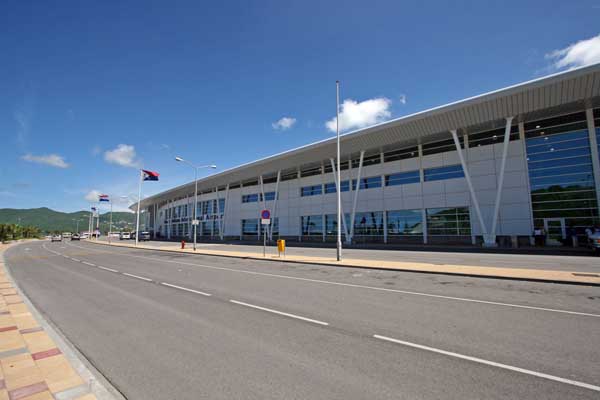 Le nouvel aéroport Princesse Juliana à Saint-Martin, partie Hollandaise 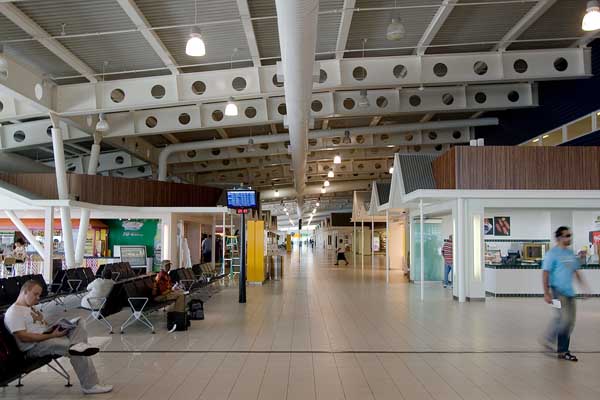 L'intérieure de l'aéroport Princesse Juliana à Saint-Martin 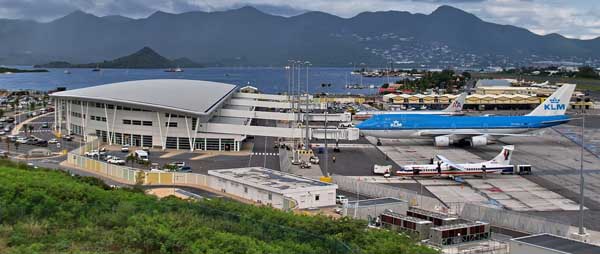 Vue aérienne de l'aéroport Princesse Juliana à Saint-Martin 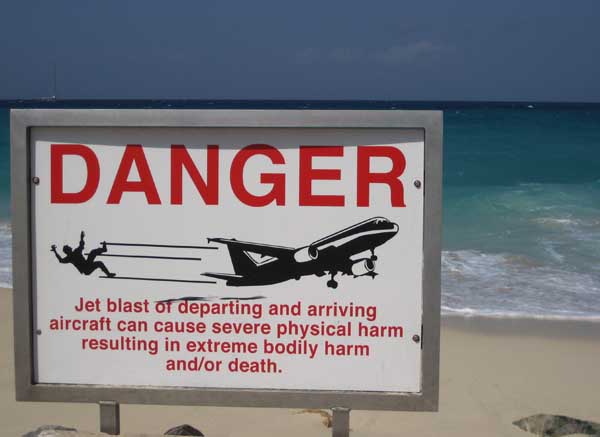 accrochez-vous à vos transats... 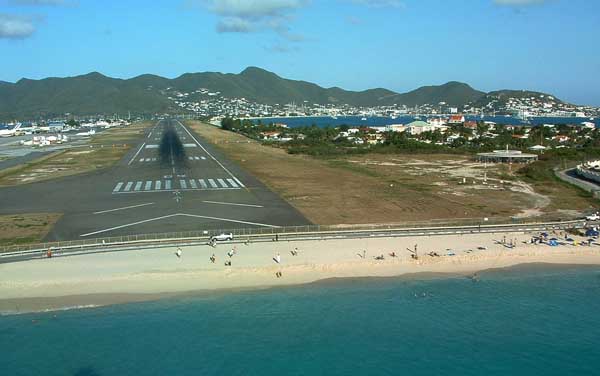 Alignement pour l'atterrissage à l'aéroport Princesse Juliana à Saint-Martin 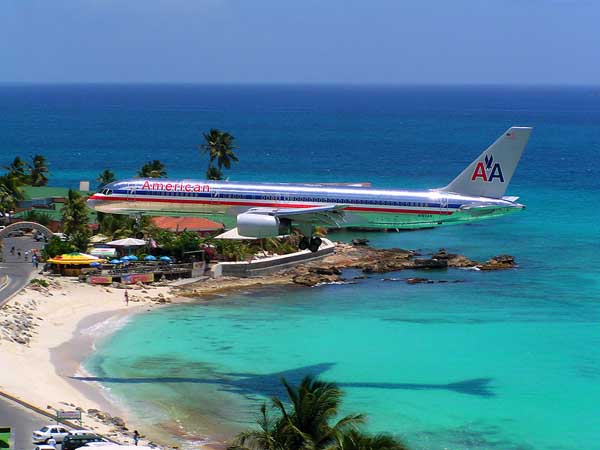 Bienvenue au Paradis... 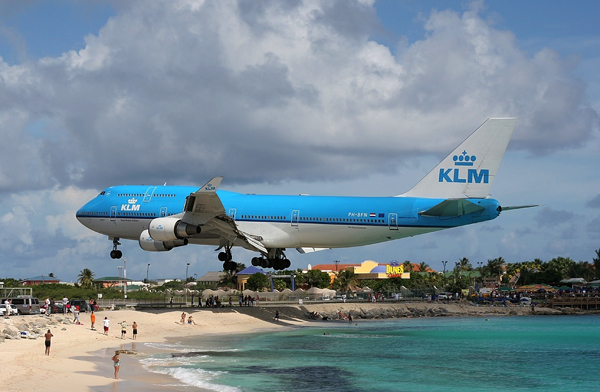 Le 747 à 10 mètres au dessus la plage de Maho à Saint-Martin 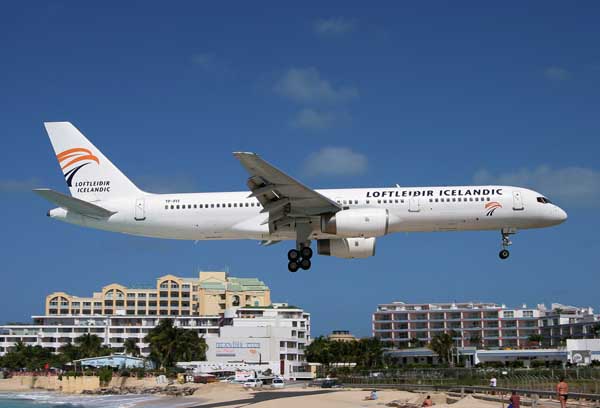 l'oiseau de fer prêt à atterrir de l'aéroport Princesse Juliana à Saint-Martin 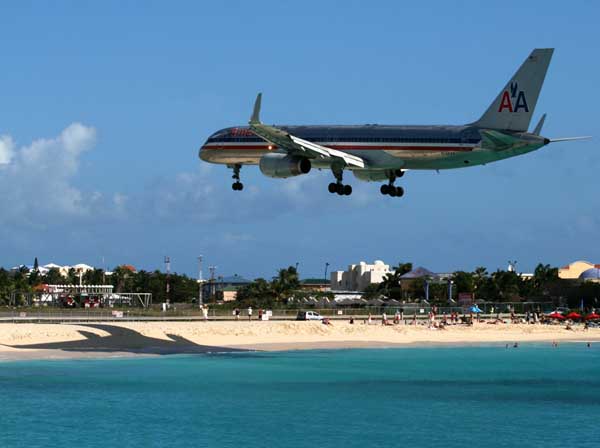 L'aéroport Princesse Juliana à Saint-Martin, pour les amateurs d'adrénaline 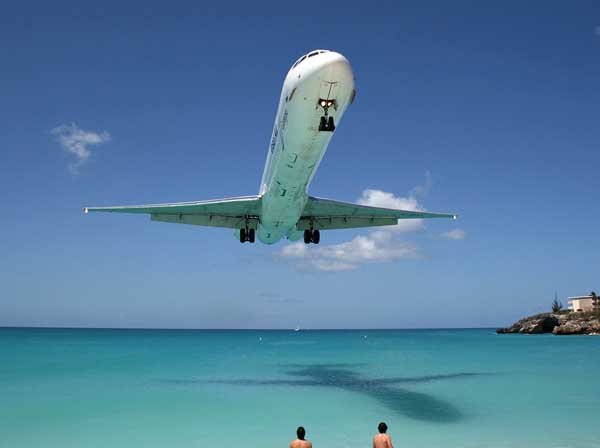 entre ciel et mer... 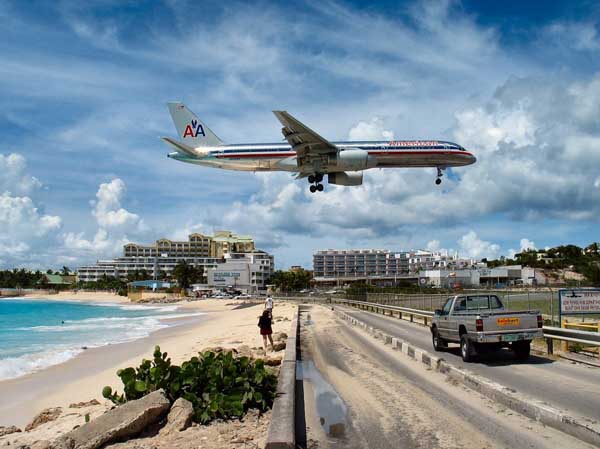 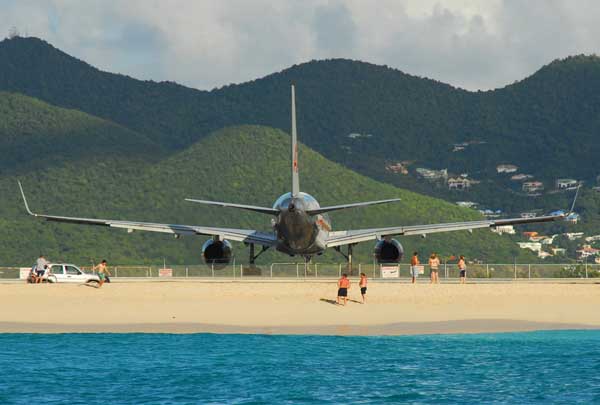 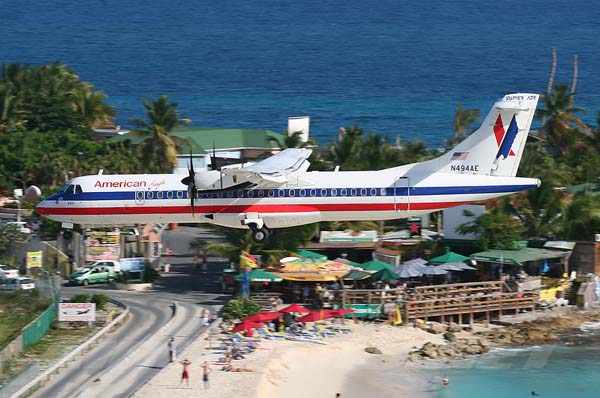 |
Location villas St Martin & St Barth -
Rental SXM -
Rental West indies -
Sint Maarteen & St Barth rental -
Villas for rent -
Villas for sale -
Condominium Rentals St. Maarten -
Beaches of St Barth's -
Luxury Service -
Bliss in ST. Maarten -
Princess Juliana -
Philipsburg -
Islet Pinel Saint Martin -
Villa Ecoute ton coeur in St Barth rental -
Kite surfing in the Caribbean -
Queen Mary 2 in Saint Martin -
The island of Saint Martin -
Villa La Magnifica in St Barth rental -
Maltese Falcon to ST Martin -
The beaches of St. Martin -
Big Game Fishing in St. Martin -
Restaurants in St. Martin -
The casinos of St. Maarten -
Villa Flora in Saint Barth rental -
Scuba diving in St. Martin -
Watersports in St. Maarten -
Villa Adelaides Escape Saint Martin rental -
Villa Bakkaris Saint Martin rental -
Villa Reef Point in St Barthélémy rental -
Villa Mimosa Saint Martin rental -
Villa Nirvana in Saint Martin -
Villa Plaza Vue Saint Martin rental -
Villa Cumulus in Saint Barthelemy rental -
Villa Sarema in Saint Martin rental -
Villa La Perla Bianca in Saint Martin rental -
Villa La Perla Classic in Saint Martin -
Villa Cala Luna in Saint Martin rental -
Villa Coral in Saint Martin rental -
Villa Donato in St Barth rental -
Villa Falaise des Oiseaux in Saint Martin rental -
Villa Monchal in Saint Martin rental -
Villa Rosebud in St Barthélémy rental -
Villa Moonrise in Saint Martin rental -
Villa Pearl in Saint Martin rental -
Villa Soleil Couchant in Saint Martin rental -
Villa Baie Longue Beach House in Saint Martin rental -
Villa Bali in Saint Martin rental -
Villa Callisto in Saint Martin rental -
Villa Casa Branca in Saint Martin rental -
Villa Au Coeur du Rocher in St Barthélémy rental -
Villa Day O in Saint Martin rental -
Villa Discovery in Saint Martin rental -
Villa Filao in Saint Martin rental -
Villa Joie de Vivre in Saint Martin rental -
Villa Kiwi in Saint Martin rental -
Villa Casa Blanca in St Barthélémy rental -
Villa la Magnolia in Saint Martin rental -
Villa la Perla Palais in Saint Martin rental -
Villa La Sarabande in Saint Martin rental -
Villa Les Zephyrs in Saint Martin rental -
Villa Mimosa in Saint Martin rental -
Villa Affriole in St Barthélémy rental -
Villa Modani in Saint Martin rental -
Villa Mongoose Run in Saint Martin rental -
Villa Mumbaï in Saint Martin rental -
Villa Nirvana in Saint Martin rental -
Villa No Limit in Saint Martin rental -
Villa Sucrier in Saint Martin rental -
Villa Sula in Saint Martin rental -
Villa Agora in Saint Martin rental -
Villa Bakkaris in Saint Martin rental -
Villa Coccinelle in Saint Martin rental -
Villa Dreaminblue in Saint Martin rental -
Villa Ecume des Jours in Saint Martin rental -
Villa Giselle in Saint Martin rental -
Villa jardin Créole in Saint Martin rental -
Villa Nirvana in St Barthélémy rental -
|